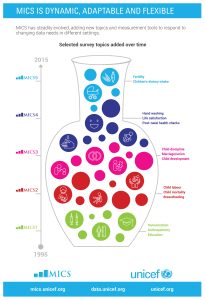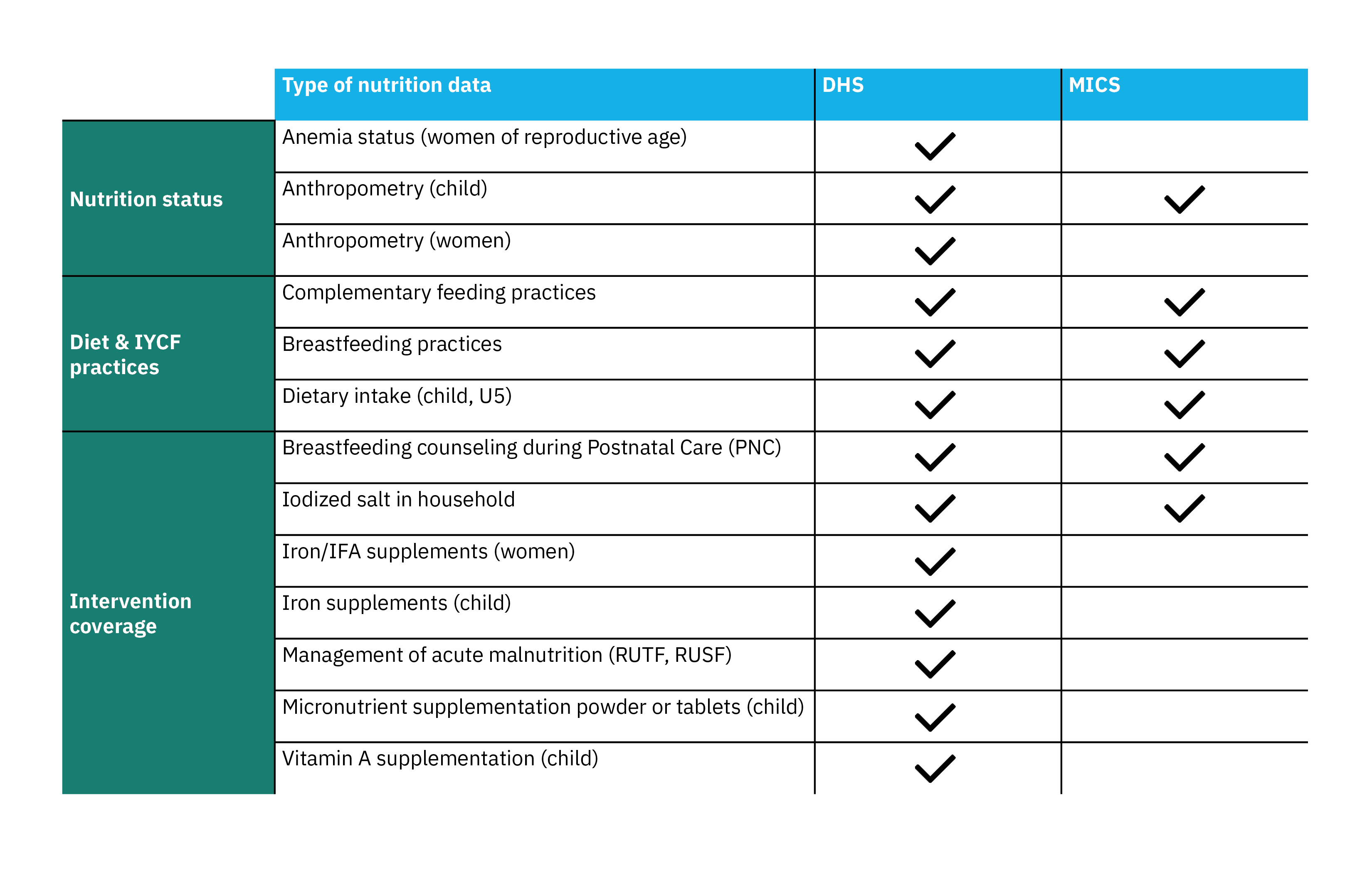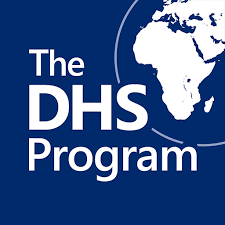
© 2015 PMA2020/Shani Turke, Courtesy of Photoshare
The Demographic Health Survey (DHS) and Multiple Indicator Cluster Survey (MICS) are primary sources of nationally-representative maternal, newborn, child health, and nutrition data for the global health community.
In an online survey conducted by DataDENT earlier this year, nutrition professionals were asked how they access and use data on nutrition. Among the 191 survey respondents, the two most commonly reported data sources were the DHS (73.8%) and MICS (41.9%). DHS and MICS data are used widely for program planning, research, policy decisions, and advocacy.
At the global level, the two surveys programs each have standardized questionnaires that ensure consistency in data across time and countries. Individual countries can make some modifications to these core questionnaires when planning for a specific survey.
This post provides an orientation to DHS and MICS and highlights what kind of nutrition data are currently available in these surveys.
What is the Demographic & Health Survey (DHS)?
- Launched in 1984, The DHS survey program is led in over 90 countries. Surveys are conducted in countries about every five years.
- The DHS Program is a Technical Assistance project managed by ICF which receives core funding from USAID as well as support from other donors.
- DHS produces nationally-representative estimates of health, population, and demographic indicators. Within each country, the samples provide data estimates for urban and rural areas of the country, and usually at least one subnational administrative level (e.g. provinces, states, districts)
- The DHS team work with countries to customize the survey – adopting optional modules or specific questions to meet country demand.
What is Multiple Indicator Cluster Survey (MICS)?

- The MICS launched in 1995 and is technically supported by a team at UNICEF HQ and has been implemented in more than 100 countries. The purpose of the survey is to collect internationally comparable data on the situation of children, adolescents, women, and households.
- The MICS has a core household questionnaire and four additional questionnaires for women, men, under-5s and 5-17-year-olds. Similar to DHS, countries can also elect to add additional modules and specific questions.
How is MICS different from DHS?
The DHS and MICS programs have worked together over time to harmonize methodologies and indicators used in surveys. However, there are some differences between the two surveys that are relevant to the nutrition community.
- Scope: MICS primarily focuses on women and children, while DHS covers broader demographic groups. DHS can include indicators related to biomarkers, sexually transmitted diseases and more detailed information on women’s reproductive behavior and family planning MICS includes indicators related to behavior toward children including child labor, discipline in the household, and early childhood development.
- Respondent: There are some minor differences in the surveys in terms of the respondent for questions regarding children under five. MICS will ask questions for all children living in households, including orphans and foster children, while DHS only poses questions related to child with a biological parents or guardians in the household.
- Variation across country: Compared to the DHS, MICS timing and content vary more by country. A MICS team works with local offices and governments to assess data gaps and identify which gaps can be appropriately filled using the MICS.
- Recall period: The DHS generally asks respondents about the previous five years, while the MICS asks about the previous two years.
What nutrition data is currently in the core DHS and MICS questionnaires?

What nutrition data is missing from DHS and MICS?
There a several key nutrition interventions recommended by the WHO and/or commonly implemented by countries that are not measured in either survey. These include monitoring weight gain during pregnancy, breastfeeding and complementary feeding counseling across time, screening for acute malnutrition, and coverage of growth monitoring and promotion, among others.
How can new questions be added to these surveys?
Both the DHS and MICS aim to be responsive to user demand and have established ways to give input to the core questionnaires. Adding new questions to both surveys can be a difficult decision given the existing length of the questionnaires and additional resources – like enumerator training – that may be needed.
MICS completed the last review in 2015. The DHS program is expected to launch a questionnaire review in early 2019. DataDENT is helping to mobilize the nutrition community to recommend changes to the next DHS questionnaire. DataDENT supported two events related to the process: Joint Consultation on Approaches to Measure Coverage of Nutrition Counselling Interventions (September 17, 2018) and Technical Consultation on Measuring Nutrition in Population-Based Household Surveys and Associated Facility Assessments (September 19-20, 2018). If you are interested in engaging or supporting this work, please feel free to reach out!

